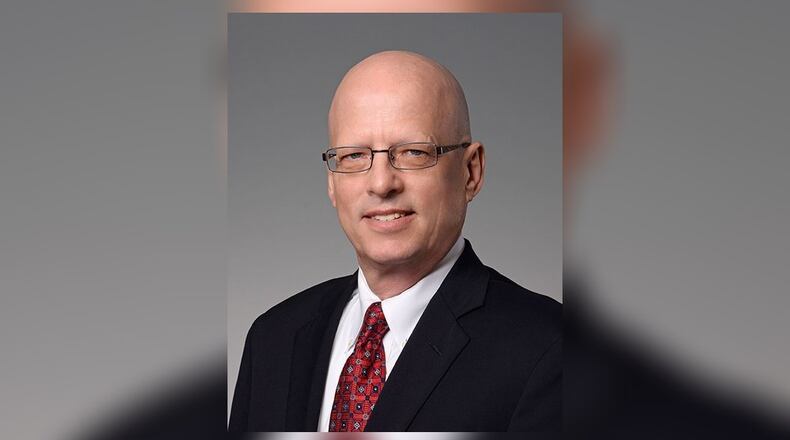FIRST REPORT: Here’s who is moving to the former Huffy HQ
If a patient fills out a medical questionaire online at home, it saves time at the doctors office. If medical equipment feeds information directly into the practice’s electronic record system, it saves staff time and reduces the chance of error.
“So over time, we really are focused on consumerism, and also making sure that the right person is doing the right job at the right place and time,” Inman said.
The independent group has 53 physicians, including both adult and pediatrics, as well as several hospitalists and a neurologist. PriMed is consolidating several offices and 12 physicians to a new office in Centerville, in the building that Huffy moved out of last year.
Beavercreek-based Mills Development bought the building at 6551 Centerville Business Parkway and said construction will begin in a few months with PriMed Physicians moving in the spring of 2020.
Mills Development plans to spend more than $3 million on upgrading the building, which is in addition to the $1.5 million the firm spent on buying the property. PriMed will lease about half of the 30,000-square-foot building.
The new building will allow PriMed to replace current aging facilities in Centerville for family practice and pediatrics and in Kettering for pediatrics, said Inman.
“It’ll have this this ‘office of the future’ design,” Inman said.
MORE: How convenience is reshaping local health care
There will be stations set up for height, weight, temperature and oxygen level. The information will go directly from that equipment into the electronic medical records, which helps avoid typo errors that happen with manually entering data. It also saves staff from the transcription work.
“So it’s safer, it’s more cost effective, and has our MAs (medical assistants) and nurses doing things that are a little higher level,” he said.
The business will be adopting a shared-services model with all calls coming into one place. Certain scheduling will be able to be able to be done online, check in and check out will be able to be done online, will be able to text informatino to patients, some forms will be moving online.
“Last year we had a large event to be called the ‘Office of the Future,’ where we asked physicians and staff to help us redesign what we look like,” Inman said.
The office will also be designed so that spaces will be more defined by furniture, not walls, which means the practice won’t have to pay to knock down walls as the work that happens at the office evolves. For example, he said if technology means fewer people are needed to great patients and staff can be doing other work, than the layout can be easily changed.
“We’ll have exam rooms and the like, and there will be walls, but it will be more flexible,” he said.
About the Author
